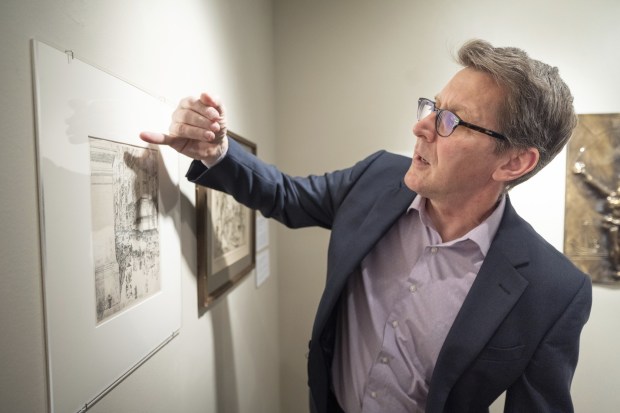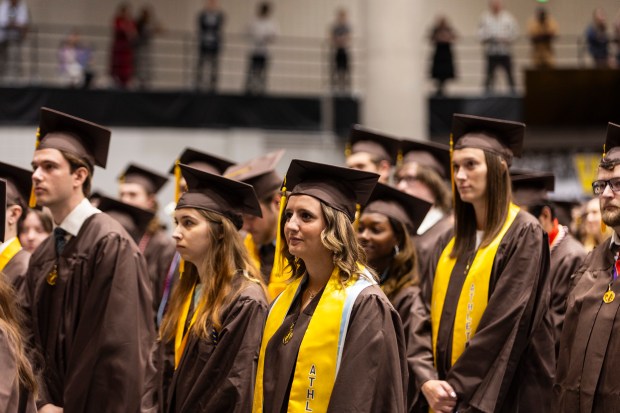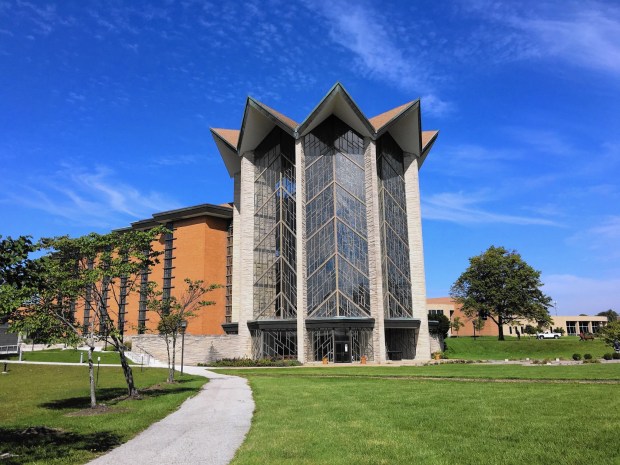Valparaiso University eliminated 14 staff positions Thursday as part of a restructuring effort, according to an internal email shared by two sources with the Post-Tribune.
Among the cuts, multiple people said, was Jonathan Canning, hired almost two years ago as director of the Brauer Museum of Art, just months before university officials announced they were considering selling the museum’s three cornerstone paintings, setting off a backlash from the university and art communities.
A university spokesman said in an email that he was not able to share information regarding personnel matters and did not respond to a request for additional information.
The email about the cuts went out to campus faculty and staff at 1 p.m. Thursday from Senior Vice President Mark Volpatti and Provost Eric Johnson, had the subject tag “Next Steps in Operational Sustainability Initiative,” and detailed seven areas that are being restructured.
The changes, according to the email, are to help the university meet the objectives of its strategic plan.
“These are part of the tough decisions we have to make in these challenging times for higher education, in order to secure the future of this university,” Volpatti and Johnson said.
The cuts are the result of an administrative review process that included data analysis and input from across the university.
“All these efforts, which began last summer, are focused on refining how Valpo operates, reducing costs, and investing in new approaches that will allow the University to grow and continue to fulfill its mission,” the email stated.
Valparaiso University’s Chapel of the Resurrection. (Amy Lavalley / Post-Tribune)
As the university is on the cusp of likely receiving court approval to auction off millions of dollars in artwork to fund dorm renovations for first-year students, a plan that is slated to include an art gallery, the Brauer Museum is shutting down for the summer with staffing to be determined later, according to the email from Volpatti and Johnson.
“Updated staffing will be determined for the fall to allow faculty/students and classes access to the collection for academic purposes,” the email states.
The paintings that could be auctioned are “Mountain Landscape” by Frederic E. Church; “Rust Red Hills” by Georgia O’Keeffe; and “The Silver Veil and Golden Gate” by Frederick Childe Hassam.
According to appraisals received by the university, the fair market value of the O’Keeffe is estimated at $10.5 million to $15 million; the Hassam, between $1 million and $3.5 million; and the Church at $1 million to $3 million.
The paintings were removed from the museum and placed in a secure, off-campus location on Sept. 12 for what university officials have said were security concerns.
The museum previously was open free of charge Wednesdays through Saturdays for the campus and community.
“Prior to the pandemic, it was open in the summer and they mounted an exhibit that would be of interest to the community,” said John Ruff, a senior professor of English at VU who has been deeply involved with the museum.
He went to the museum Wednesday to see this summer’s exhibit and found the doors locked.
Ruff called the elimination of Canning’s job “really sad” and praised the many exhibits and programs put on by the museum during Canning’s brief tenure.
“It seems to me the university has decided we don’t need a museum,” Ruff said, adding the announcement about selling the paintings was “a gut punch” and the museum’s vast collection is likely to be viewed going forward like a rare book, and not as a campus and community resource.
Canning did not respond to a request for comment. As the controversy over the sale of the artwork has unfolded since February 2023, when José Padilla, the university’s president, first announced university officials were considering the measure, Canning has declined to speak publicly about the proposed sale.
He did, however, put together an exhibit that went on display on March 29, 2023, in the Education Gallery about the deaccessioning process, with an explanation of what the process is and examples from the Brauer Museum’s collection of pieces that the museum can and cannot divest from.

Brauer Museum of Art director and curator Jonathan Canning points out a tear caused when someone tried to steal the piece “Fifth Avenue, Noon”, as he points out criteria for deaccessioning art in an exhibit at the museum on Thursday, April 6, 2023. (Kyle Telechan for the Post-Tribune)
“I decided to do a show on the museum field’s best practices for deaccessioning,” Canning said while going through the new exhibit when it opened.
It included a printout of Padilla’s letter to the campus community about the potential sale, as well as a statement from the four major museum associations condemning the possible sale as a breach of museum ethics and best practices because the funds would not be reinvested into the museum’s collection and because of the tenets of the restrictive trust that provided two of the works.
There’s also a statement on the controversy surrounding the sale of the artwork, including whether it’s acceptable for the university to use the museum’s collection as a capital reserve to meet budgetary needs.
“The university believes it is,” the statement notes. “Among museums, however, such an act is an anathema. Donors either gave works of art or the funds to acquire them specifically to enrich the cultural life of the community. It was not their intention to support operating costs, programmatic expenses, or other needs.”
In other changes announced by Volpatti and Johnson, Auxiliary Services and Recreational Sports/Intramurals are being shifted away from Student Life to the Office of Finance and Administration and Athletics, respectively.
“Student Life will sharpen its focus on providing the very best student experience, and Dean of Students Ryan Blevins will assume its leadership,” the email stated, also noting that Student Life is being shifted from the provost’s office to that of the president.
Other structural shifts are taking place in Title IX, Human Resources and University Communications.
Notification of impacted staff started Thursday morning, Volpatti and Johnson said in the email, and they are receiving separation agreements commensurate with their tenure.
“These decisions are certainly challenging, but they are being made with the best interests of Valparaiso University in mind. Our aim is to secure a stable and promising future for our institution,” the email said.

The university announced on March 1 that it was considering cuts in undergraduate and graduate programs with low enrollment that include some foreign language majors, theology, music and cybersecurity, among other areas of study, and the potential for limited faculty cuts.
Any programs that are discontinued would be phased out through the end of the 2026-27 school year, allowing currently enrolled students to complete their majors.
The department changes are being considered as part of the university’s updated strategic plan, released in the fall of 2022 by Padilla. The university has faced a host of challenges over the past several years, including declining enrollment and the closure of its law school.
Two faculty members in contact with the Post-Tribune, who work within departments from which possible cuts were announced in the spring, said the morale in the arts and humanities is low.
Faculty in those departments likely won’t know about cuts until August, shortly before the next academic year begins.
alavalley@chicagotribune.com



